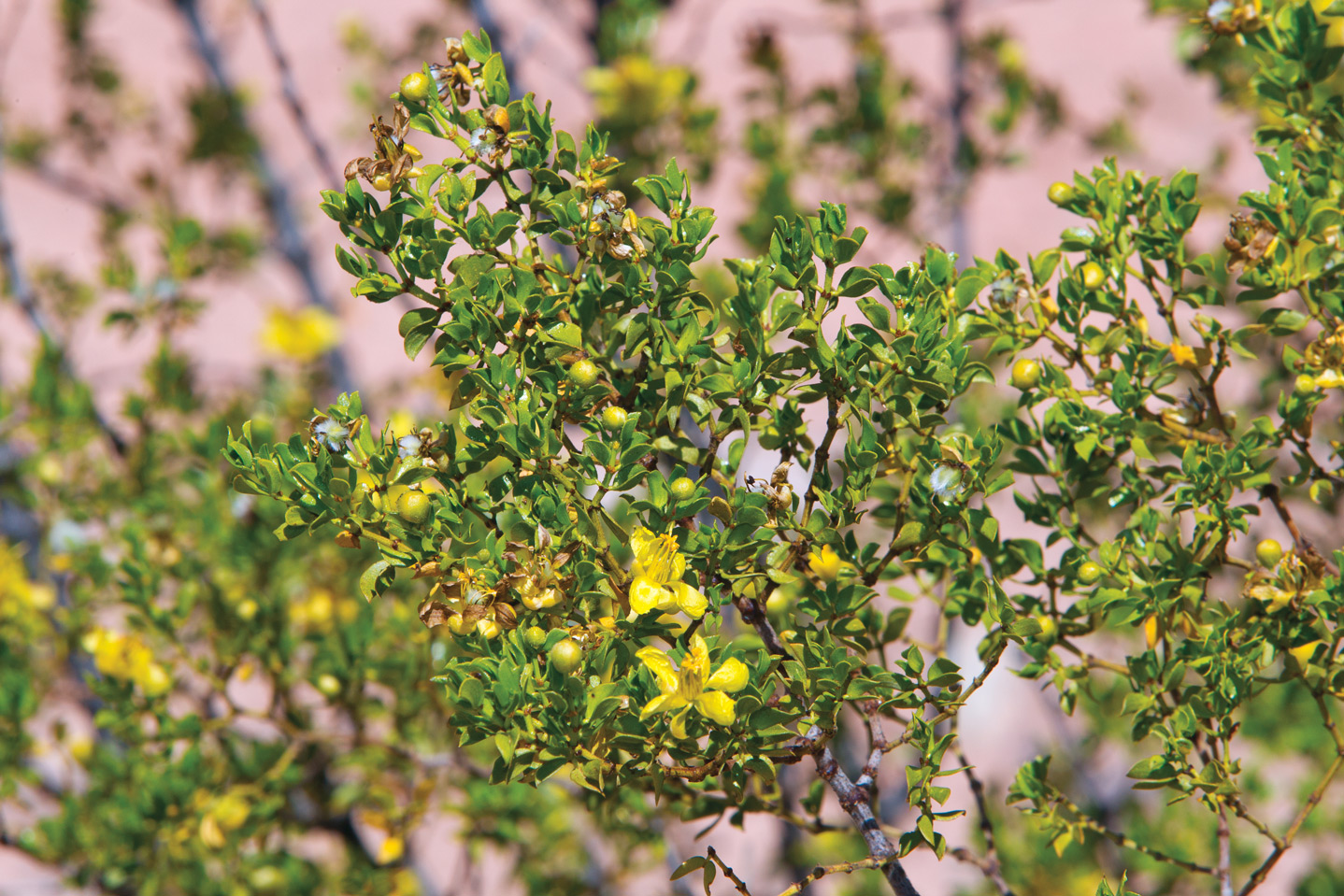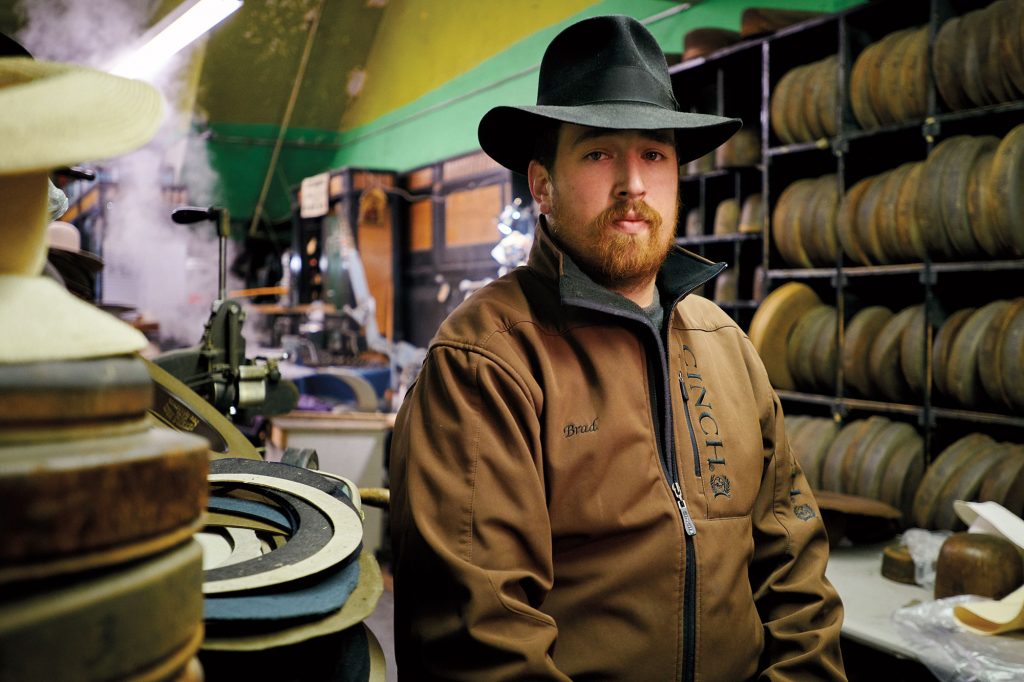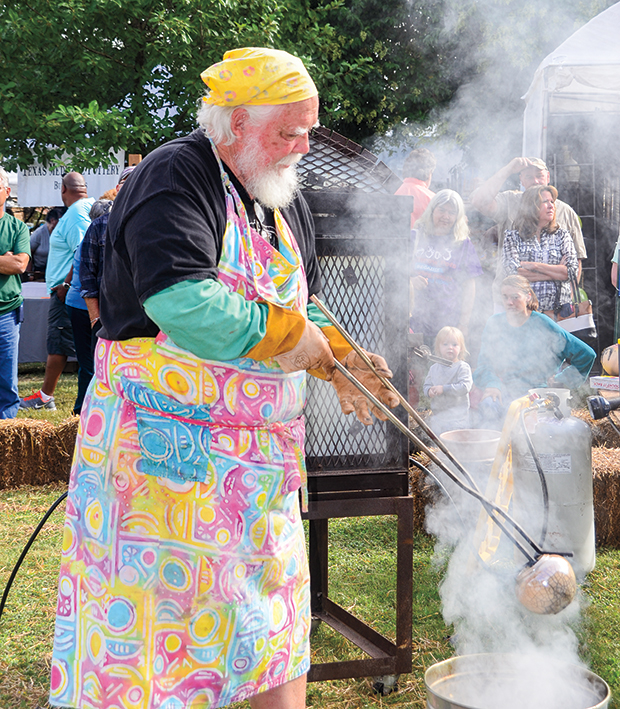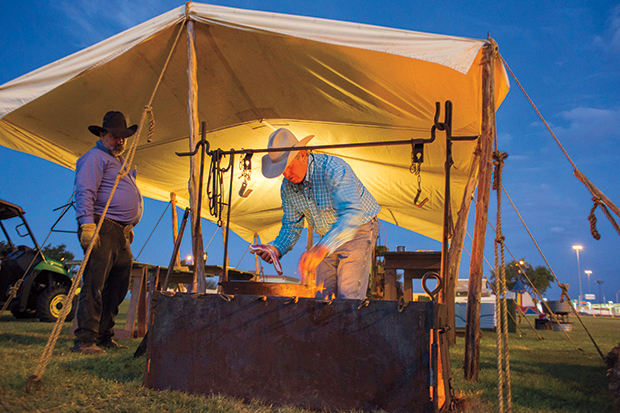Deep in the heart of a ranch sprawling across the foothills of the Chinati Mountains, a stand of dark-green creosote bushes contrasts with the rocky landscape. The August weather is hot and dry, but these plants have some secret source of water. Candace Covington discovered them several years ago while helping with one of several archaeological digs on the ranch.
Covington, an Alpine resident, harvests the waxy leaves of these bushes to make Creosote Bush Salve, a concoction she first whipped up while working as a river guide in Terlingua.
“Getting in and out of the Rio Grande every day and this harsh, dry environment gave the guides painful cracks on their heels and hands,” she says. “I made a large bowl of salve from locally available creosote bush and put it out in the boat house. The results were amazing. Cracks healed within days, and we had softer skin and happier boaters.”
Creosote Bush Salve tins sell in some 30 locations around West Texas, including shops in Marfa, Fort Davis, Alpine, Terlingua, and Big Bend National Park, as well as online at etsy.com/shop/creosotebushsalveco
Chemical sensitivities first sparked Covington’s interest in natural remedies and herbal medicines. The plants growing in the desert south of Alpine, her hometown, and a love for outdoor pursuits further fueled that interest. She also had a friend whose family went back several generations in the area, including a great-grandmother from Mexico steeped in a culture that used holistic healing. One day, that friend told her that his father burned himself badly and used a salve of creosote and Vaseline to treat the burn.
“That got the wheels turning in my brain,” Covington says. “I had learned about oil infusions from books and knew I could do something with that in a more natural way. I just started playing with it.”
She spent years perfecting the recipe, researching different ingredients and techniques to make a salve as strong and potent as possible. The ingredients of her final product include grapeseed oil, creosote bush leaf, and beeswax (but no Vaseline).
“I wanted it to be as dark, rich, concentrated and medicinal as possible,” she explains. “I finally stumbled upon a method that met my standards, that produces a dark green salve with a strong smell and so packed with creosote that it could heal a cut overnight.”
Creosote Bush Salve became a bona fide business in 2012. A few months ago, I came across a basket of small tins of
Creosote Bush Salve at The Get Go grocery in Marfa and opened one up. A fresh, earthy aroma wafted out. Many West Texans recognize the distinctive smell of creosote and associate it with rain. Scientifically speaking, the scent comes from a combination of volatile oils in the leaves, including terpene (found in pines), limonene (citrus), camphor (pines and rosemary), and methanol (wood alcohol).
Locals also recognize the uses of creosote, and many people have told Covington stories about them. “Someone will tell me their grandmother made a salve of it, or they burned it in the house if someone was sick or put it in their shoes to take the smell away,” Covington says. “One customer told me that when he was growing up in Santa Elena just across the Rio Grande, they slept outside most of the summer and kept a creosote fire smoldering to keep bugs away.
“There is a deep, amazing cultural attachment and appreciation for this plant, a tradition that goes back hundreds of years,” she says. “Native American tribes that lived around it used it for a variety of things. One thing that seemed to cross all the different cultures was using it topically for saddle sores on horses.”
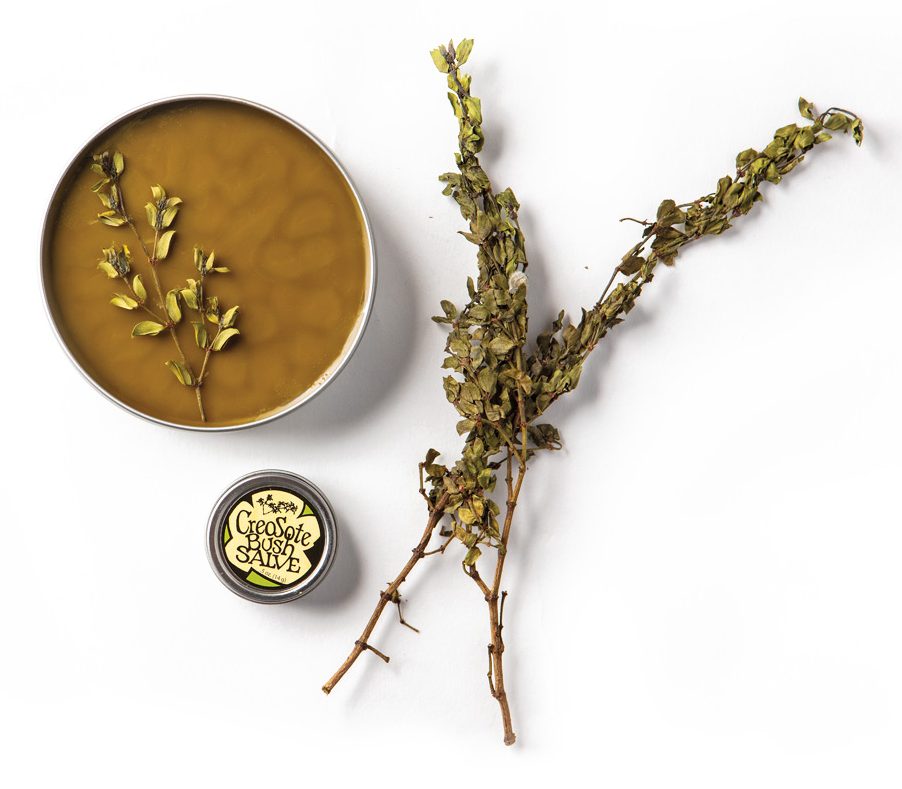
Covington doesn’t collect leaves from bushes near roads because they may have been exposed to run-off and vehicle exhaust. She instead relies on ranchers in the area who let her harvest on land where the bushes stay green year-round.
The most drought-tolerant perennial plant in North America, creosote grows abundantly in the Chihuahuan Desert and throughout the Southwest, including from the Edwards Plateau to the Rio Grande Plains in Texas. Some people call it greasewood or hediondilla. A bush can live at least two years without any water by shedding its leaves and even its branches, but typically the plant is an evergreen, with thick, green, resin-coated leaves that turn golden brown in dry seasons. The color of her salve depends on the color of the leaves, which is why Covington only harvests the green ones.
A recent outing to harvest creosote with Covington left me with scrapes and scratches and a couple of itchy bites. Back home, I cracked open a tin and dabbed them all with the salve, taking a deep whiff of its unmistakable scent. For a moment, I went back to that day out in the desert under a wide sky, the silhouette of mountains in the distance, a fresh breeze on my face. I felt better already.
A Century of Scents
• Creosote plants often live 100 years or longer.
• The bushes produce clonal colonies, or groups of plants with the same genetic makeup. New shoots grow from the outer edge of the root crown, and older stems die in the center over time.
• Because creosote contains compounds that prevent animals from
digesting its leaf tissues, jackrabbits are the only mammals known to eat the leaves, and they do so only when desperate.
• Jackrabbits and those in search of natural remedies aren’t creosote’s only fans—22 bee species feed solely on this plant’s flowers.
